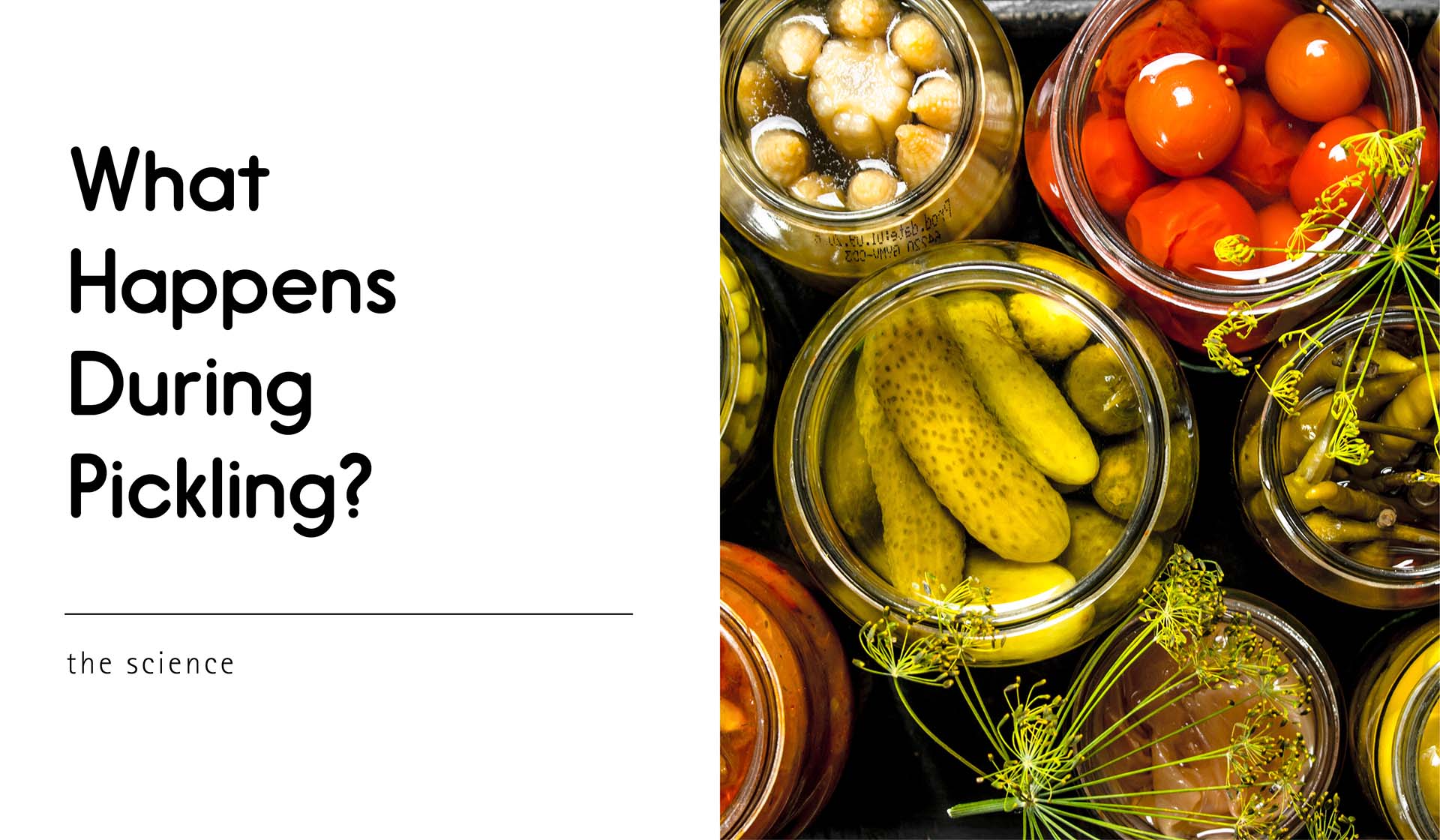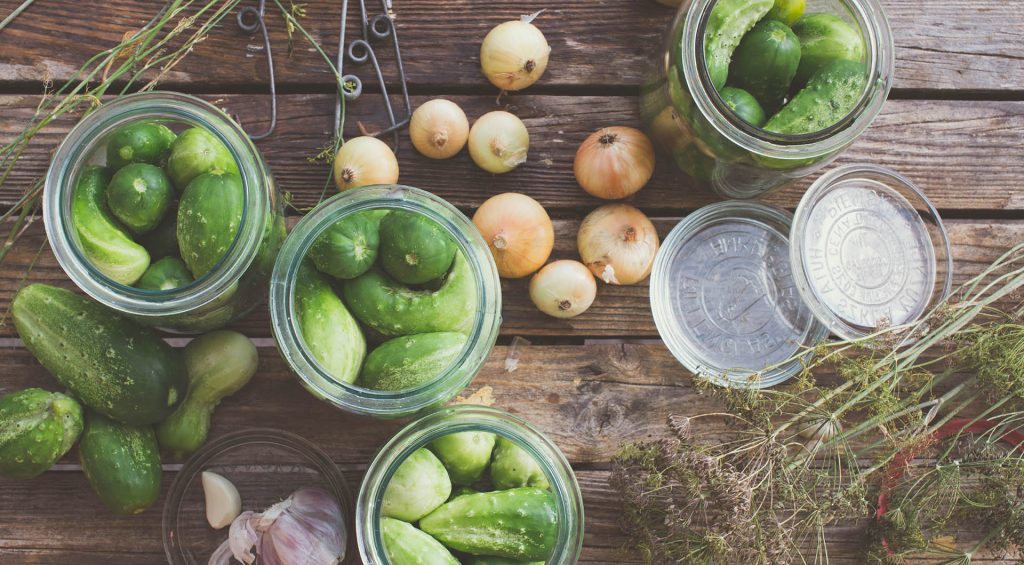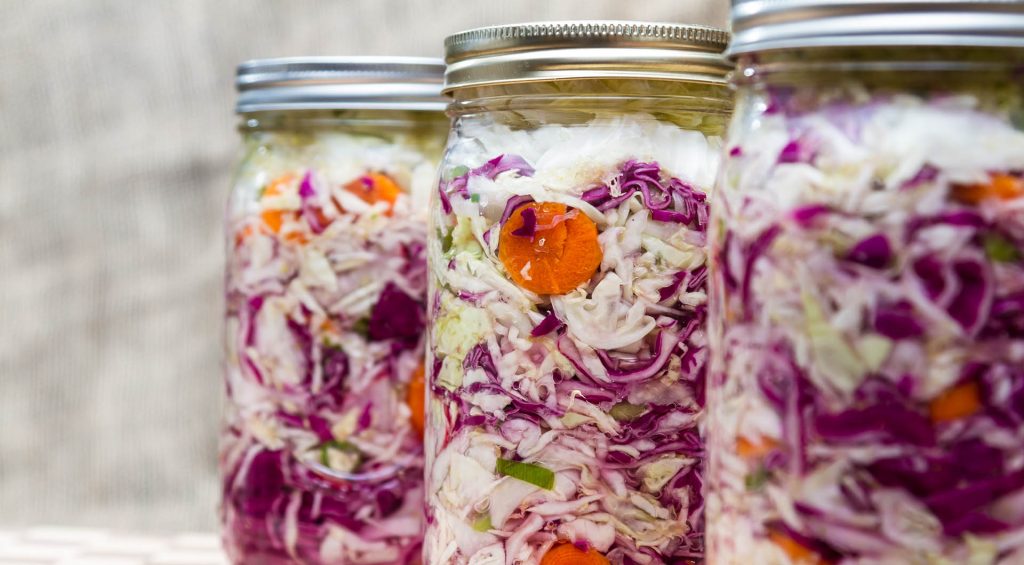What Happens During Pickling?

Ever wonder just what makes pickles taste so darn good? There is actually a lot of science that goes into the making of a delicious pickle. It’s quite fascinating to consider what a few ingredients put together can create. The better you understand the science behind a good pickle, the better you can create your own jar of incredibly tasty pickles.

How a Cucumber Becomes a Pickle
Cucumbers contain harmless bacteria that increases during the pickling process. While bacteria grow, it also prevents more harmful bacteria from growing and causing cucumbers to spoil.
To transform a cucumber into a pickle, vegetable sugars need to be metabolized to prevent the growth of bad bacteria. The process must also produce antibacterial substances, usually carbon dioxide and alcohol, without changing the fiber and vitamin content of the vegetable.
This process is known as lactic acid fermentation because it’s the acid’s job to preserve the vegetable and give pickles the desired tart flavor. The good bacteria also improves the pickle’s flavor and increases the amount of B vitamins.
There are two types of pickle processing methods. The first uses vinegar to preserve the cucumbers. Vinegar has a strong acid content that doesn’t allow the growth of harmful bacteria that can spoil the vegetables.
You can also make pickles using a salt brine and a scientific fermentation process.

The Process of Fermentation
To ferment cucumbers into pickles, a brine solution is poured over fresh vegetables. Brine usually consists of water and salt, but to achieve a more flavorful pickle, you can add in various spices, garlic, and herbs.
The brine needs to cover all of the vegetables to prevent spoilage due to oxygen exposure. This complete covering also prevents the growth of molds and fungi that can ruin your batch of pickles. Traditionally, the cucumbers must be densely packed, or weighted down, to prevent them from floating to the surface.
To achieve the perfect brine strength for homemade pickles, you should have at least 5-6% salinity. Other fermented vegetables require different salinity strengths to preserve them properly.
After a day or two of fermentation, little bubbles of carbon dioxide form in the liquid surrounding the cucumbers. This lets you know the good bacteria is doing its job and the brine is acidifying.
You should leave your pickle jars covered with a clean towel to allow the buildup of gas to escape. If you want really sour pickles, you should allow the fermentation process to go on for about two weeks. Other fermented vegetables, such as turning cabbage into sauerkraut, can take as long as a month to achieve the desired results.
When your pickles are properly fermented, you can store the pickle jars in the refrigerator to slow down the fermentation process and keep your pickles from spoiling.
Follow Only Time-Tested Recipes
The process of transforming fresh cucumbers into tart or spicy pickles isn’t the best time for experimentation. Because the safety of your food is on the line, it’s best to follow only time-tested recipes step-by-step to ensure the fermentation process goes smoothly.
Using reliable recipes ensures your cucumbers are well-preserved and will be resistant to spoilage and the growth of harmful bacteria. It can take some time to grow accustomed to the process of canning pickles, but it is well worth the effort if you love the tang of a flavorful, crunchy pickle.
Be sure to use only the freshest vegetables and spices to create the best tasting batch of pickles. You should also invest in high-quality pickle jars and tight-sealing lids, like those available at Bottlestore.com.
Read More
The Science of Pickles – Fine Cooking
